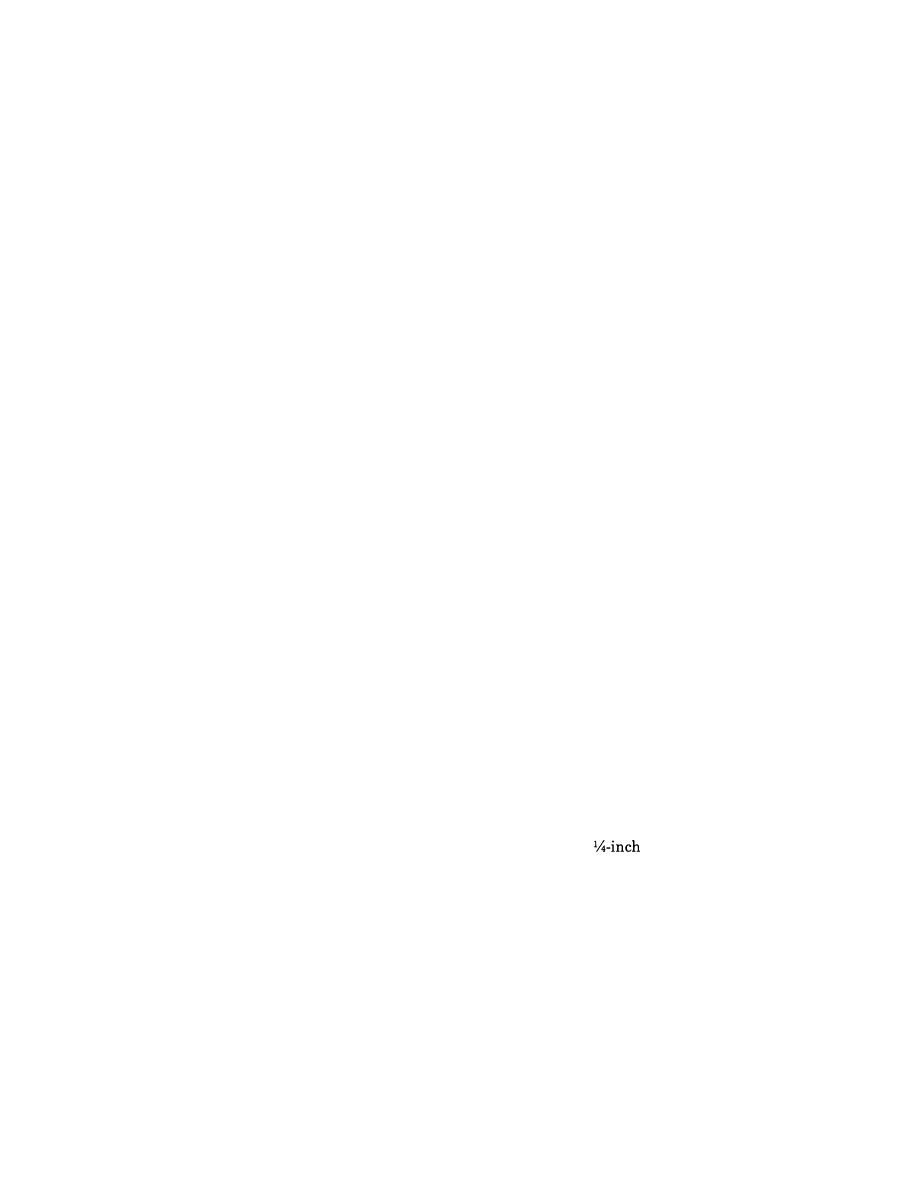

Custom Search
|
|

|
||
 TM 5-684/NAVFAC MO-200/AFJMAN 32-1082
(a) Unloading. Poles should be unloaded by
gun, fitted with a suitable nozzle, applied at two or
approved methods. Instructions on unloading and
three holes bored to connect with the galleries. Oc-
__
hauling poles are given in "The Lineman's and
casionally, ground-dwelling termites are found in
otherwise sound poles, and they may be destroyed
Cableman's Handbook." Care should also be used in
unloading from trucks or pole trailers and in all
in the same manner.
handling, both to prevent damage to the workers
(d) Certified personnel. Use of a certified pest
and to the pole. Some poles may break or crack
control company and personnel or entomologist to
when subjected to sudden shock but would have had
perform treatments which employ insect repellent
adequate strength for normal use. Pointed tools are
chemicals. Personnel certification must be by the
not recommended for handling poles; but if neces-
state in which the facility is located.
sary they should be applied only near the butt end.
(2) Woodpecker damage. Many ideas have been
(b) Storage. Poles should be installed as rap-
tried out by pole users in an effort to outwit these
idly as possible after they are received as poles
birds, but nothing has been proven to be economi-
deteriorate even in storage. Proper storage methods
cally justifiable. Considerable study is in progress
can reduce this to a minimum. Poles should be
on the problem. In the meantime, two points are
stored in a well-drained yard devoid of vegetation
worth keeping in mind.
and debris and on skids (preferably metal) 30 inches
(a) Direct damage. There is some tendency to
(75 centimeters) above ground. Spacing the poles to
exaggerate the damage done by woodpeckers. The
provide adequate ventilation is necessary. To protect
breaking point of a pole is near the ground line.
the poles from disease, spacing blocks should be
Most woodpecker attacks occur above the midsec-
tion. The Rural Electrification Administration
clean treated timber. Pole stacks should be ad-
(REA) indicates that damaging actions which cause
equately supported to prevent bending, crushing, or
less than a 25 percent wood loss above the midsec-
distortion of poles. All poles should be turned to
tion probably will not result in a serious loss of pole
expose different areas to rain and sun every 6
strength. With consideration to wind loading, wood-
months. Additional preservative should be applied
pecker holes are less damaging when on wire-line
as needed, particularly on former support bearing
connection faces rather than on nonwire-line pole
areas. Poles stored for more than 1 year should be
faces.
given a groundline supplementary treatment.
(b) Secondary damage. Woodpecker holes of-
(c) Field installation. AI1 boring and gaining
ten expose untreated wood to moisture and the
should be done by the supplier before the original
spores of fungi, with resultant decay that weakens
treatment. When it is necessary to do any framing
the pole far beyond that done by the holes them-
or boring of treated poles in the field, any gains or
selves. A woodpecker selects a pole only by chance,
holes should be promptly and carefully treated with
and that first hole invites further attack by other
generous applications of an approved preservative.
woodpeckers. For these reasons, it is good mainte-
Unused holes should be filled with an approved
nance practice to seal these holes. Epoxy formula-
preservative and sealed with a tight-fitting treated
tions are available for repair of bird damage.
plug.
(c) Nest poles. Experience at some facilities
c. Wood-rotting fungi and decay. All species of
shows that if a nest pole needs to be removed and
fungi weaken wood. Once fungi have gained a foot-
replaced, the new pole will be singled out for a new
hold, the destructive attack continues at an increas-
nest. Based on facility experience, it may be better
ing rate over a larger and larger area. By the time
to leave the nest pole standing and transfer conduc-
decay to the depth of
(0.6 millimeters) is
tors to an adjacent new pole.
detected, the loss of strength has gone to the depth
(3) Fire damage. Many poles are lost or dam-
of an inch (25 millimeters) or more. Speed of decay
is affected by moisture, temperature, type of soil,
aged as a result of fires. Freshly treated poles can
often be easily ignited, but after a few months in
and optimum time element.
service they become more resistant to fire. Where
(1) Moisture. All growing fungi require a mois-
grass fires are of annual occurrence, the grass
ture content in the wood of 25 to 50 percent, though
around poles should be eliminated in the spring
some forms of brown rot occur when little moisture
with commercial weed killers. A water-soluble type
is present and are sometimes called "dry rot." Wood
soil-sterilant is recommended, which will keep
continuously wet does not decay, due to the exclu-
weeds down for a 3-year period.
sion of air. When wood is dry, fungi become dor-
(4) Other damage. Poles can be damaged by
mant, but start growing again when the required
moisture conditions are restored. Due to the narrow
improper loading and storage methods or by poor
range of moisture requirements, wood alternately
field installation.
C-2
|
 
|
|
 |
||